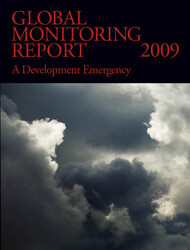
South Africa: Technical Assistance Report-Stress Testing the Central Bank Balance Sheet and Calibrating Risk-based Capital Buffers
South Africa: Technical Assistance Report-Stress Testing the Central Bank Balance Sheet
and Calibrating Risk-based Capital Buffers
READ MORE...
Volume/Issue:
Volume 2025
Issue 051
Publication date:
ISBN:
Add to Cart by clicking price of the language and format you'd like to purchase
Available Languages and Formats
Topics covered in this book
This title contains information about the following subjects.
Click on a subject if you would like to see other titles with the same subjects.
Banks and Banking , Finance , Stress testing , Policy solvency , South Africa , , GFECRA buffer , ZAR appreciation , stress test framework , IMF's Monetary , A , policy solvency , SARB balance sheet , Financial statements , International reserves , Central bank policy rate , Exchange rates , Africa
Summary
Central bank balance sheet stress testing (CBST) models are designed to support central banks in determining appropriate capital levels and informing decisions on dividend distribution. A key concept in this context is policy solvency, which refers to a central bank's ability to generate realized earnings over time that exceed its monetary policy and operational costs. This mission proposed a CBST model specifically tailored for the South African Reserve Bank (SARB). The background is that the SARB and National Treasury (NT) have established a new financial framework focusing on the Gold and Foreign Exchange Contingency Reserve Account (GFECRA). A key principle is to prevent GFECRA distributions from undermining the SARB’s policy solvency. The mission demonstrated the CBST model to enable the SARB to institutionalize a process for forecasting its balance sheet under macroeconomic scenarios, ensuring robustness despite external adverse shocks. The CBST model includes a Value-at-Risk approach for foreign exchange (FX) revaluation losses and assesses the adequacy of equity buffers under combined FX-at-Risk and Inflation-at-Risk scenarios. Given the SARB’s public commitment to annually recalibrate the two buffers, it is important for the SARB to institutionalize and publicly communicate the methodologies underpinning the process.
Copyright © 2010 - 2025
Powered by:
AIDC



